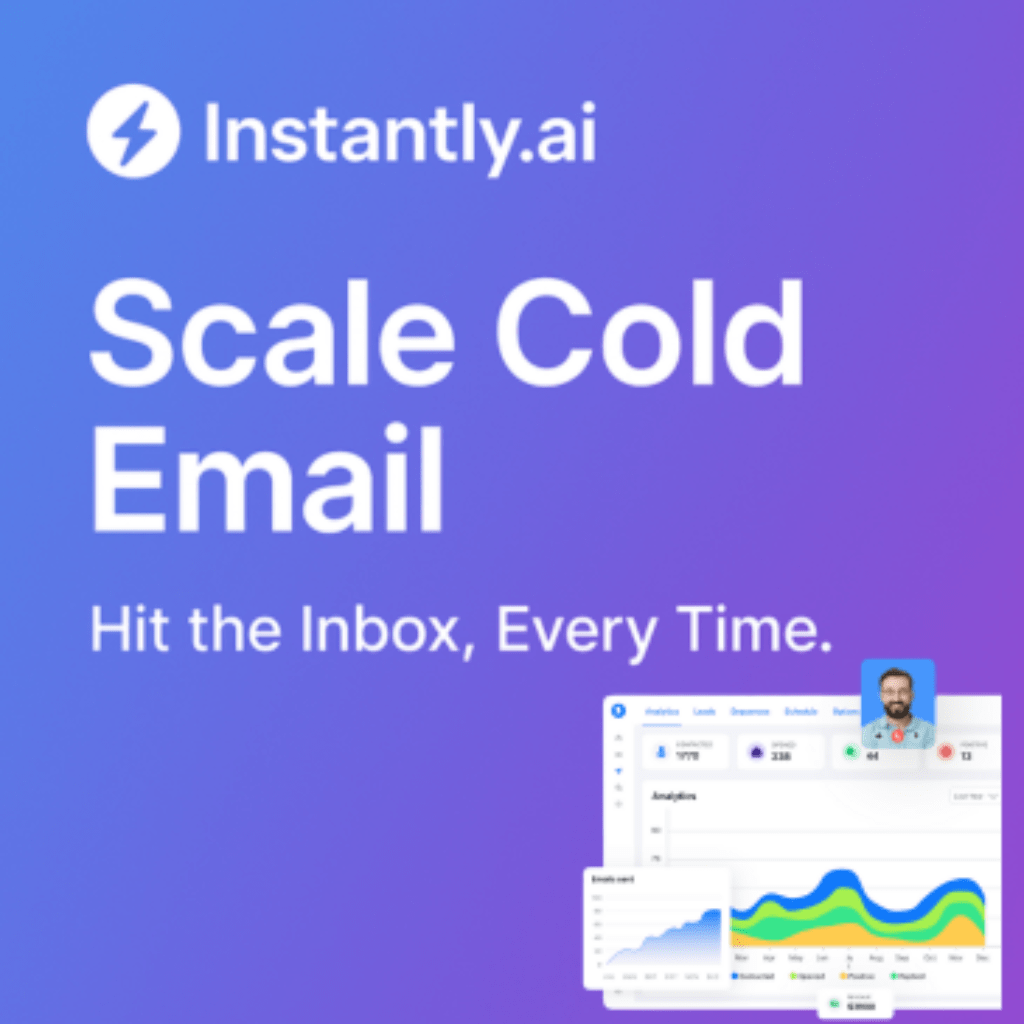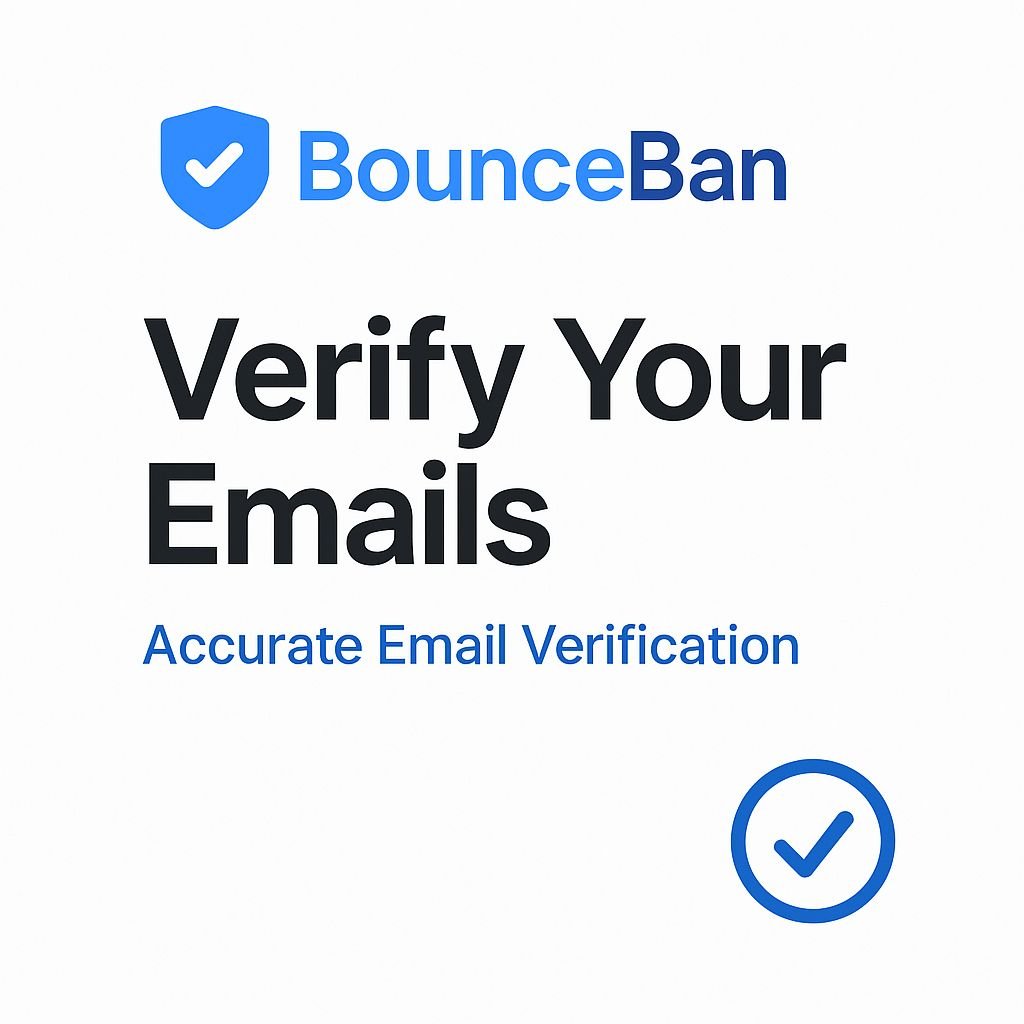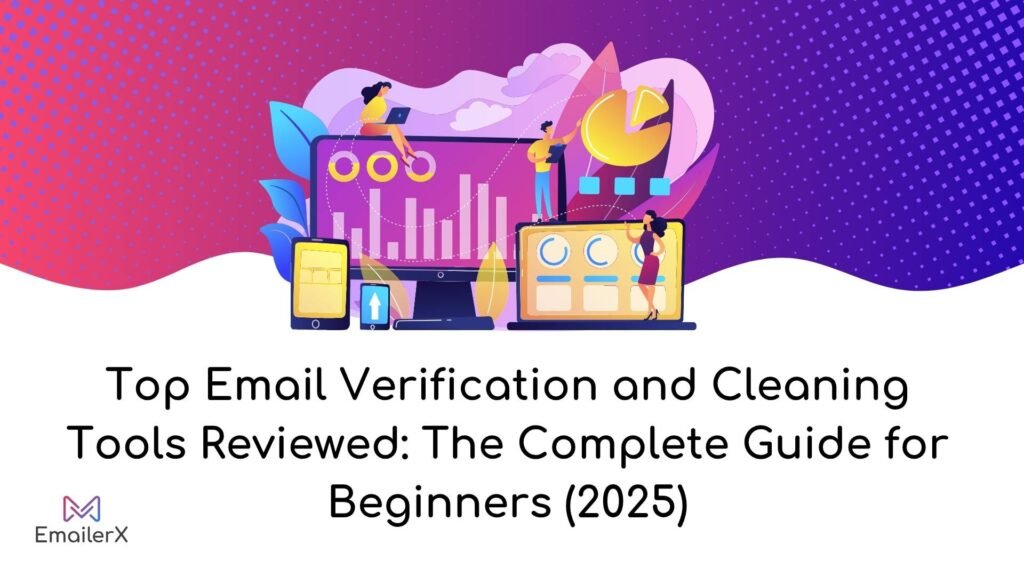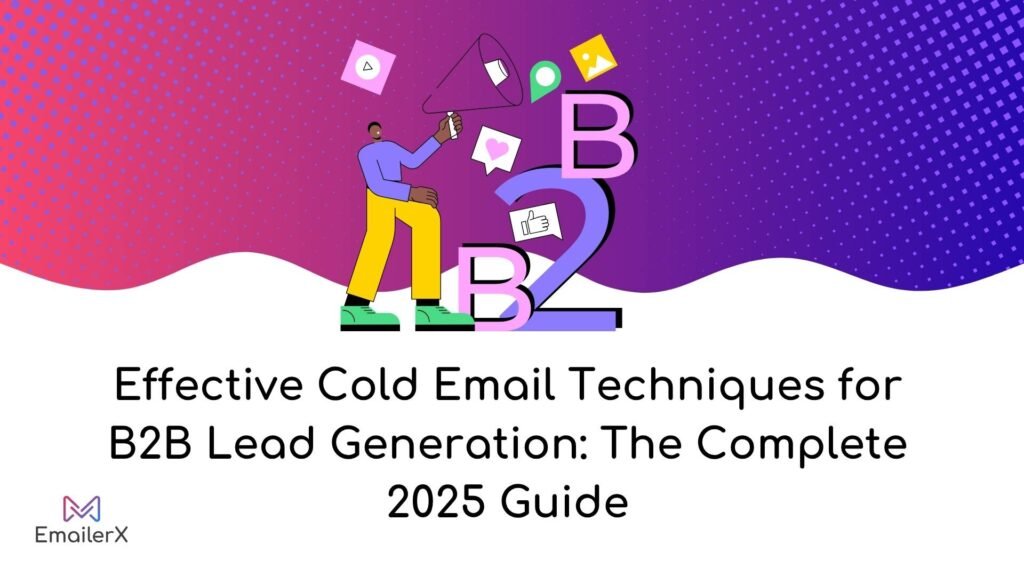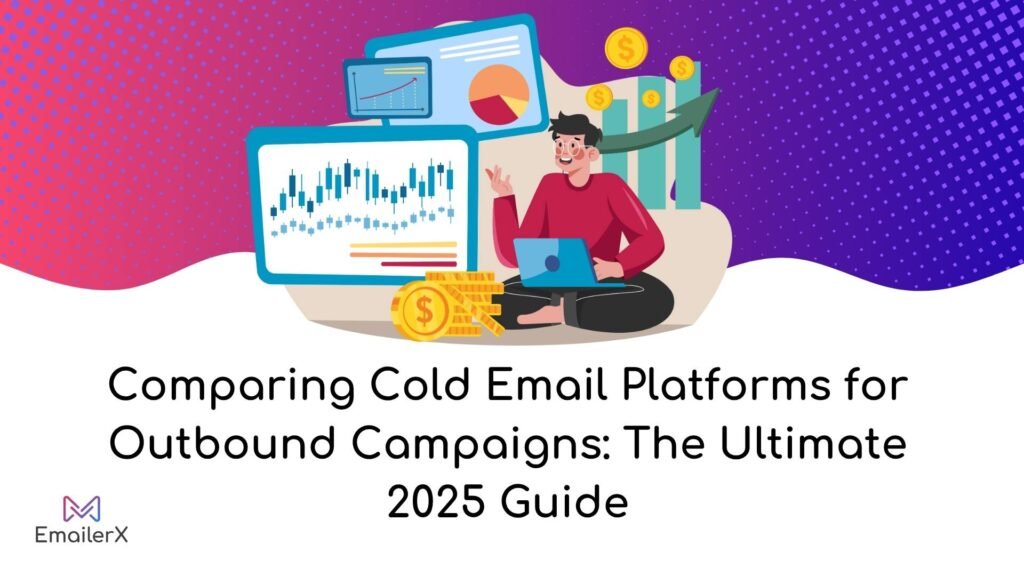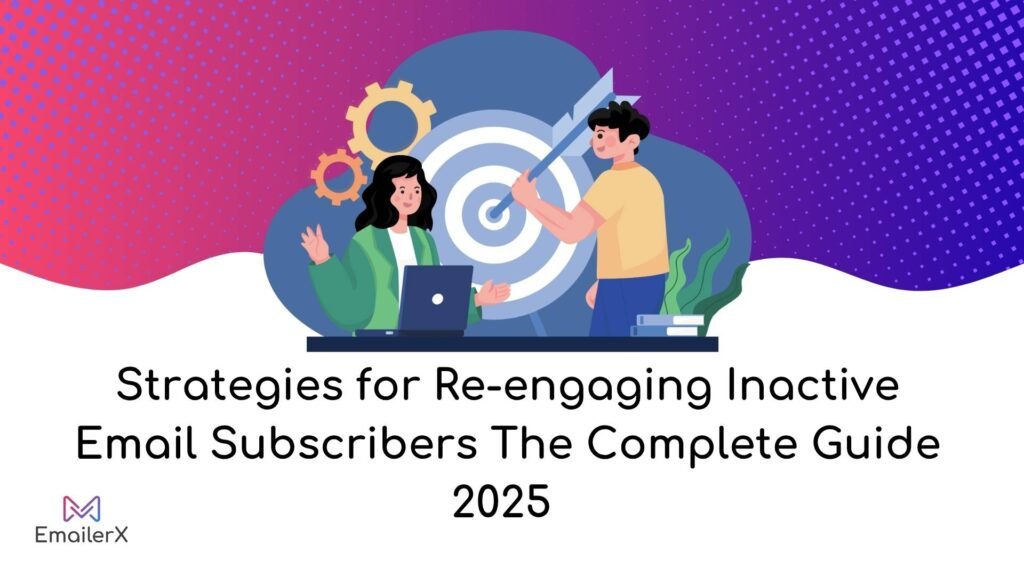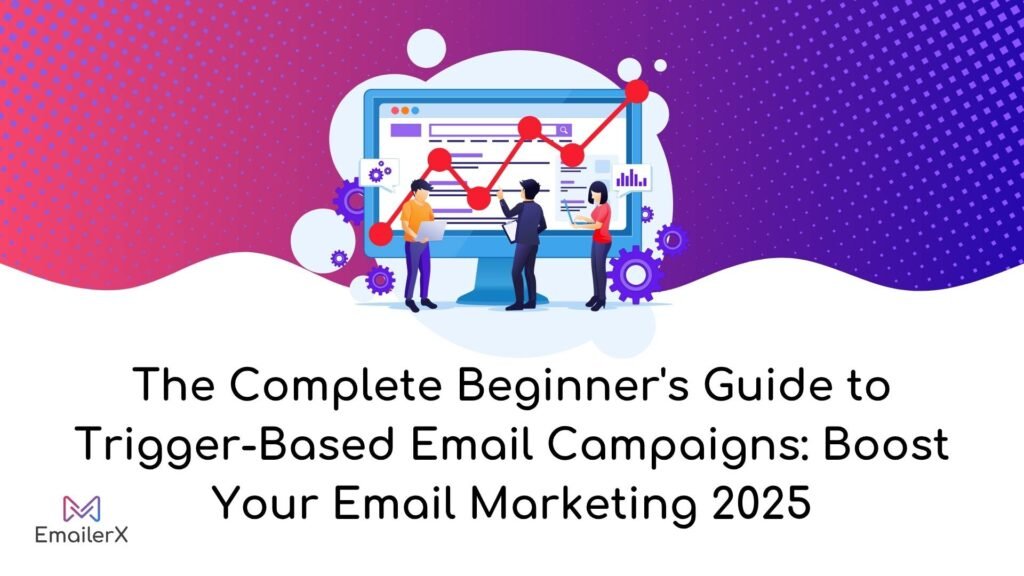Email marketing continues to deliver the highest ROI of any digital marketing channel, with an impressive $36 return for every dollar spent. Yet many businesses struggle to choose the right email marketing platform from a crowded landscape of over 450 specialized tools and comprehensive marketing suites.

In this comprehensive guide, we’ll navigate the complex world of email marketing tools to help you make an informed decision that aligns with your unique needs, whether you’re sending 500 emails monthly or managing campaigns with millions of subscribers.
Table of Contents
ToggleUnderstanding the Email Marketing Technology Ecosystem

The world of email marketing has transformed substantially in the last ten years, undergoing remarkable changes that have redefined how businesses connect with their audiences. What was once a handful of simple newsletter tools has transformed into a complex ecosystem with specialized platforms for every niche and need.
Types of Email Marketing Technologies
Email Delivery Platforms: These systems serve as the foundation of any email marketing strategy, managing the crucial tasks of designing, distributing, and monitoring email initiatives. The options span from simple newsletter services to sophisticated marketing automation ecosystems with extensive capabilities.
Marketing Automation Platforms: These platforms go well beyond standard email features by incorporating customer pathway visualization, cross-channel coordination, and sophisticated response mechanisms triggered by specific user interactions and behaviors.
Transactional Email Services: Specialized for sending time-sensitive, triggered emails like order confirmations, password resets, and account notifications.
Cold Email Outreach Tools: Designed for sales prospecting and outbound campaigns with features like personalization at scale, automated follow-ups, and reply tracking.
Email Testing and Optimization Tools: Focused on improving deliverability, subject line testing, and content optimization to maximize campaign performance.
Key Market Trends in 2025
- AI-Driven Personalization: Machine learning algorithms now power advanced segmentation, content recommendation, and send-time optimization.
- Volume-Based Pricing Models: Platforms are increasingly shifting from subscriber-based to send-volume pricing, making selection more nuanced.
- Privacy-First Features:As legislation such as GDPR and CCPA continues to develop, built-in compliance tools have become a critical factor when evaluating which platform to adopt for your business needs.
- API-First Architecture: More platforms are offering robust APIs and integrations to fit seamlessly into existing marketing stacks.
- First-Party Data Focus: With the deprecation of third-party cookies, email platforms are emphasizing first-party data collection and activation.
Volume-Based Tool Selection: The Smart Approach

The most significant factor in choosing the right email marketing platform is often overlooked: your monthly sending volume. This factor affects everything from pricing to feature requirements and technical infrastructure needs.
Why Volume Matters More Than Features
- Pricing Efficiency: Many businesses overpay by selecting platforms with enterprise features they’ll never use.
- Deliverability Optimization: Different volume tiers require different deliverability approaches and infrastructure.
- Scalability Planning: Starting with a volume-appropriate platform prevents painful migrations later.
- Resource Allocation: Higher-volume platforms often require more technical expertise and management resources.
Determining Your Optimal Volume Tier
Consider these factors when assessing your volume needs:
- Current monthly sending volume
- Projected growth over the next 12-18 months
- Email frequency per subscriber
- Seasonal volume fluctuations
- Transactional email requirements
- Automation complexity
The Three-Tier Volume Framework
For simplicity, we’ll categorize email marketing tools into three volume tiers:
- Low-Volume (1-5,000 emails/month): For solopreneurs, small businesses, and startups
- Mid-Volume (5,000-100,000 emails/month): For growing SMBs, e-commerce stores, and content creators
- High-Volume (100,000+ emails/month): For enterprises, large e-commerce operations, and high-scale senders
Low-Volume Email Marketing Tools (1-5,000 emails/month)

If you’re sending fewer than 5,000 emails monthly, you need an intuitive platform with the right balance of simplicity and functionality, without complex features that overwhelm beginners.
Best Low-Volume Email Marketing Platforms
Mailer Lite:
Key Features:
- Intuitive drag-and-drop editor
- Free plan up to 1,000 subscribers
- Built-in landing page builder
- Basic automation workflows
- Clean, modern templates
Best For: Solopreneurs, bloggers, and small businesses looking for simplicity with room to grow. Pricing: Free for up to 1,000 subscribers; paid plans start at $10/month.
Convert Kit:
Key Features:
- Creator-focused platform
- Visual automation builder
- Commerce features for digital products
- Tag-based subscriber organization
- Customizable sign-up forms
Best For: Content creators, coaches, and digital product sellers who want subscriber-centric features.
Pricing: Free for up to 1,000 subscribers; paid plans start at $29/month.
Moosend:
Key Features:
- AI-powered email recommendations
- E-commerce focused features
- List segmentation capabilities
- Landing page builder
- Subscription form templates
Best For: Small e-commerce businesses and service providers looking for advanced features at an accessible price.
Pricing: Plans start at $9/month for unlimited emails to 500 subscribers.
Implementation Tips for Low-Volume Senders
- Focus on List Quality: With smaller lists, focus on engagement over quantity.
- Leverage Templates: Use pre-designed templates to create professional campaigns quickly.
- Master One Platform: Rather than using multiple tools, focus on mastering one platform’s capabilities.
- Start with Simple Automations: Begin with welcome sequences and gradually build more complex workflows.
- Optimize for Mobile: Ensure your templates work perfectly on mobile devices, where most emails are opened.
Mid-Volume Email Marketing Platforms (5,000-100,000 emails/month)

As your email marketing scales, you need more sophisticated segmentation, automation, and integration capabilities to manage larger subscriber bases effectively.
Best Mid-Volume Email Marketing Platforms
ActiveCampaign:
Key Features:
- Advanced automation builder
- CRM functionality
- Predictive sending technology
- Site tracking and event recording
- Machine learning-powered contact scoring
Best For: SMBs needing sophisticated automation and CRM integration.
Pricing: Plans start at $29/month for 1,000 contacts.
Klaviyo:
Key Features:
- Deep e-commerce integrations
- Advanced segmentation engine
- Powerful flows and automations
- Predictive analytics
- Multi-channel capabilities (email, SMS)
Best For: E-commerce businesses seeking revenue-generating automations.
Pricing: Free up to 250 contacts; paid plans start at $20/month.
SendinBlue/Brevo:
Key Features:
- Volume-based pricing (not contact-based)
- Integrated SMS marketing
- Powerful marketing automation
- Landing page builder
- Transactional email capabilities
Best For: Businesses with large lists but moderate sending frequency. Pricing: Free up to 300 emails per day; paid plans start at $25/month.
Implementation Tips for Mid-Volume Senders
- Invest in Segmentation: Create detailed segments based on behavior, demographics, and engagement.
- Develop Customer Journeys: Map out comprehensive automation workflows based on customer lifecycle stages.
- Optimize Send Timing: Test different send times and implement timezone-based delivery.
- Implement A/B Testing: Regularly test subject lines, content, and sending parameters.
- Connect Your Tech Stack: Integrate your ESP with your CRM, e-commerce platform, and analytics tools.
High-Volume Email Solutions (100,000+ emails/month)

Enterprise-scale email marketing requires robust infrastructure, advanced deliverability tools, and sophisticated orchestration capabilities to manage millions of personalized communications.
Best High-Volume Email Marketing Platforms
HubSpot Marketing Hub:
Key Features:
- All-in-one marketing platform
- Advanced automation and workflows
- Enterprise-grade security
- Multi-user permissions
- Comprehensive reporting
Best For: Enterprise businesses seeking a unified marketing platform.
Pricing: Email marketing included in Marketing Hub; starter plans begin at $45/month.
Salesforce Marketing Cloud:
Key Features:
- Journey Builder for complex customer journeys
- Einstein AI for predictive content
- Advanced segmentation
- Multi-channel orchestration
- Deep CRM integration
Best For: Enterprise organizations already using Salesforce CRM.
Pricing: Custom pricing, typically starting at several thousand dollars monthly.
Mailchimp:
Key Features:
- Customer journey builder
- Advanced audience insights
- Content optimizer
- Send time optimization
- Campaign manager
Best For: Growing businesses with high-volume needs and marketing teams familiar with the platform.
Pricing: Plans start at $17/month for 500 contacts; premium features available in higher tiers.
Implementation Tips for High-Volume Senders
- Build a Specialized Team: Consider hiring email specialists for strategy, design, and technical management.
- Implement BIMI and DMARC: Enhance deliverability and sender reputation with proper authentication.
- Develop a Sunset Policy: Regularly remove inactive subscribers to maintain engagement metrics.
- Establish Testing Protocols: Create systematic A/B testing procedures for continuous optimization.
- Consider Dedicated IPs: Separate marketing, transactional, and notification emails across dedicated IPs.
Specialized Email Marketing Tools
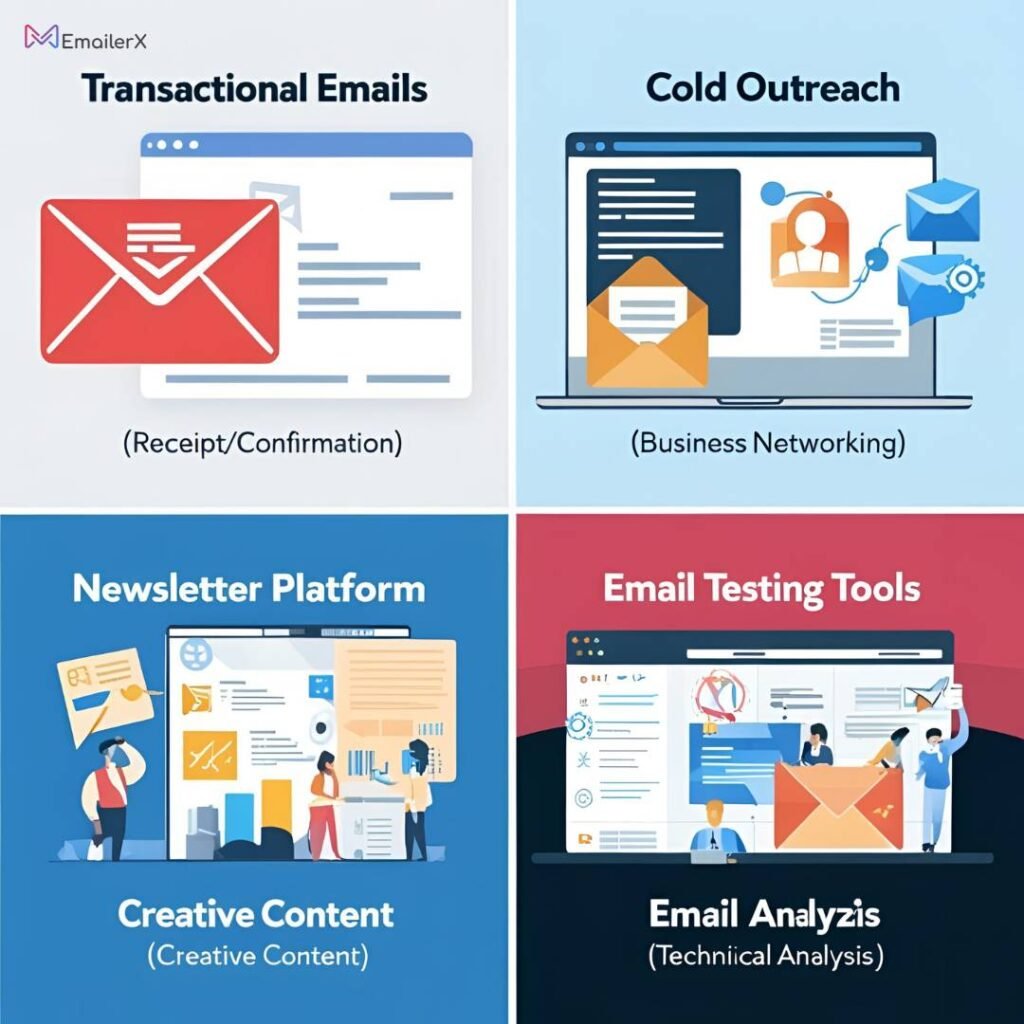
Beyond general-purpose ESPs, specialized tools can enhance specific aspects of your email marketing strategy.
Transactional Email Services
For business-critical, triggered emails with high deliverability requirements:
Postmark:
Key Features:
- Industry-leading deliverability
- Real-time delivery monitoring
- SMTP integration
- Template engine
- Detailed bounce handling
Best For: Businesses sending critical transactional emails that must arrive instantly.
Pricing: $10/month for 10,000 emails.
Cold Email Outreach Tools
For sales teams and businesses focusing on outbound prospecting:
Lemlist:
Key Features:
- Personalized images and videos
- Multi-channel sequences
- A/B testing
- Team collaboration features
- CRM integrations
Best For: Sales teams focusing on personalized outreach at scale.
Pricing: Plans start at $59/month per user.
Email Testing and Optimization
For businesses looking to maximize deliverability and performance:
Litmus:
Key Features:
- Email previews across 100+ devices and clients
- Spam testing
- Email analytics
- Collaboration tools
- Email builder with pre-tested templates
Best For: Marketing teams seeking to optimize email rendering and performance.
Pricing: Plans start at $99/month.
The AI Revolution in Email Marketing
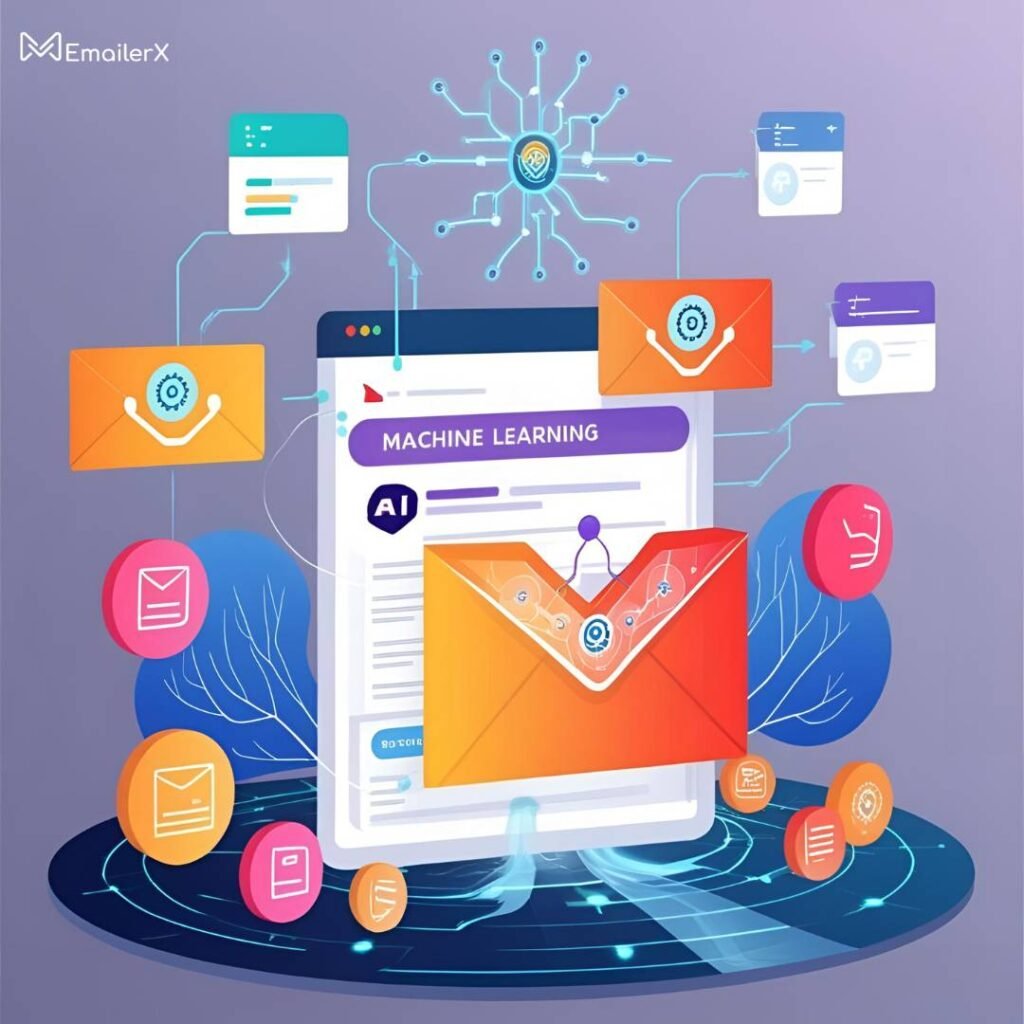
Artificial intelligence is transforming email marketing from a manual, time-intensive process to an intelligent, data-driven channel. Here’s how AI is reshaping the email landscape:
- Content Generation and Optimization
- AI-powered subject line generators
- Smart content recommendations
- Dynamic content selection based on individual behavior
- Predictive Analytics and Segmentation
- Predicted customer lifetime value segmentation
- Churn prediction modeling
- Purchase propensity scoring
- Send-Time Optimization
- Individual open-time prediction
- Engagement window determination
- Cross-time zone optimization
- Testing and Performance Enhancement
- Multi-variant testing beyond traditional A/B tests
- Automated winners selection based on goals
- Continuous optimization algorithms
Top AI-Enhanced Email Marketing Platforms
Seventh Sense:
Key Features:
- AI-powered send time optimization
- Engagement-based frequency determination
- Integration with major ESPs
- Fatigue monitoring
- Deliverability enhancement
Best For: Businesses using HubSpot or Marketo seeking enhanced engagement.
Pricing: Plans start at $80/month.
Phrasee:
Key Features:
- AI-generated subject lines and copy
- Brand-optimized language generation
- Predictive performance
- Multivariate testing
- Language optimization
Best For: Enterprise marketers looking to optimize email copywriting at scale.
Pricing: Custom enterprise pricing.
Compliance and Privacy-First Email Marketing

With increasingly strict regulations around personal data, compliance features have become essential in email marketing platform selection.
- GDPR (General Data Protection Regulation)
- Applies to anyone emailing EU citizens
- Requires explicit consent, not pre-checked boxes
- Mandates easy unsubscribe options
- Requires data processing records
- CCPA (California Consumer Privacy Act) & CPRA
- Affects businesses with California customers
- Gives consumers right to know what data is collected
- Provides right to delete personal information
- Requires opt-out options for data sale
- CAN-SPAM Act
- U.S. law governing commercial emails
- Prohibits deceptive subject lines
- Requires physical address in emails
- Mandates unsubscribe mechanism
- Gmail & Yahoo Sender Requirements (2024)
- Requires proper authentication (SPF, DKIM, DMARC)
- Mandates easy unsubscribe process
- Requires spam complaint rates below 0.3%
- Enforces volume requirements for bulk senders
Compliance Features to Look For
- Consent management tools
- Data processing records
- Right to be forgotten automation
- Cookie consent management
- Double opt-in functionality
- Unsubscribe preference centers
- Data retention policy implementation
- Compliant forms with explicit consent
Components of Email Marketing TCO
- Direct Platform Costs
- Monthly/annual subscription fees
- Per-contact or per-email fees
- Add-on feature costs
- Multiple seat licenses
- Implementation and Setup Costs
- Template design
- Integration development
- Migration from previous platforms
- Automation workflow setup
- Ongoing Management Costs
- Staff time for campaign management
- Training and upskilling
- Agency or consultant fees
- Regular updates and maintenance
- Opportunity Costs
- Platform limitations affecting revenue
- Learning curve impacting time-to-value
- Technical constraints limiting campaigns
TCO Comparison Framework

When comparing platforms, consider these factors beyond the basic subscription:
- Time to value: How quickly can you implement and see results?
- Team efficiency: Will the platform save or require more staff time?
- Scalability costs: How does pricing change as you grow?
- Integration expenses: What will it cost to connect with your tech stack?
- Feature utilization: Will you use the features you’re paying for?
Implementation and Migration Guide

Whether you’re implementing your first email marketing platform or migrating from an existing solution, these steps will ensure a smooth transition.
Platform Implementation Checklist
- Technical Setup
- Domain authentication (SPF, DKIM, DMARC)
- Custom domain configuration
- API integration with existing systems
- User permission setup
- Content Migration
- Template recreation or import
- Asset library migration
- Automation workflow rebuilding
- Landing page and form transfer
- List Migration
- Subscriber data cleaning and formatting
- Custom field mapping
- Tag and segment recreation
- Preference and consent transfer
- Testing and Validation
- Rendering tests across devices
- Integration functionality testing
- Automation logic verification
- Analytics confirmation
Migration Timeline and Planning
For a typical mid-size business, plan for:
- Pre-Migration (2-4 weeks): Planning, data cleaning, and setup
- Technical Implementation (1-2 weeks): Technical infrastructure configuration and software integration with existing business systems.
- Content Migration (2-4 weeks): Template recreation and workflow building
- Testing Phase (1-2 weeks): Comprehensive testing across all elements
- Parallel Running (2-4 weeks): Operating both platforms simultaneously during transition
- Complete Transition (1 week): Complete transition and retirement of previous system
Future-Proofing Your Email Marketing Strategy

The email marketing landscape continues to evolve rapidly. Here’s how to ensure your strategy remains effective in the coming years.
Emerging Trends to Watch
- Interactive Email Experiences
- AMP for Email adoption
- Interactive polls and surveys
- In-email shopping experiences
- App-like functionality within emails
- Privacy-First Marketing
- First-party data strategies
- Zero-party data collection
- Preference-based personalization
- Consent-centric communication
- Cross-Channel Orchestration
- Seamless email and SMS integration
- Push notification coordination
- In-app messaging synchronization
- Unified messaging platforms
- AI-Driven Personalization Evolution
- Individual-level content optimization
- Predictive journey mapping
- Customer lifetime value optimization
- Autonomous campaign optimization
Future-Ready Platform Selection Criteria
When evaluating platforms for long-term viability, consider:
- API-first architecture for flexibility
- Regular feature updates and innovation
- Strong data portability options
- Commitment to compliance and privacy
- Support for emerging standards and technologies
Conclusion: Selecting the Right Platform for Your Needs
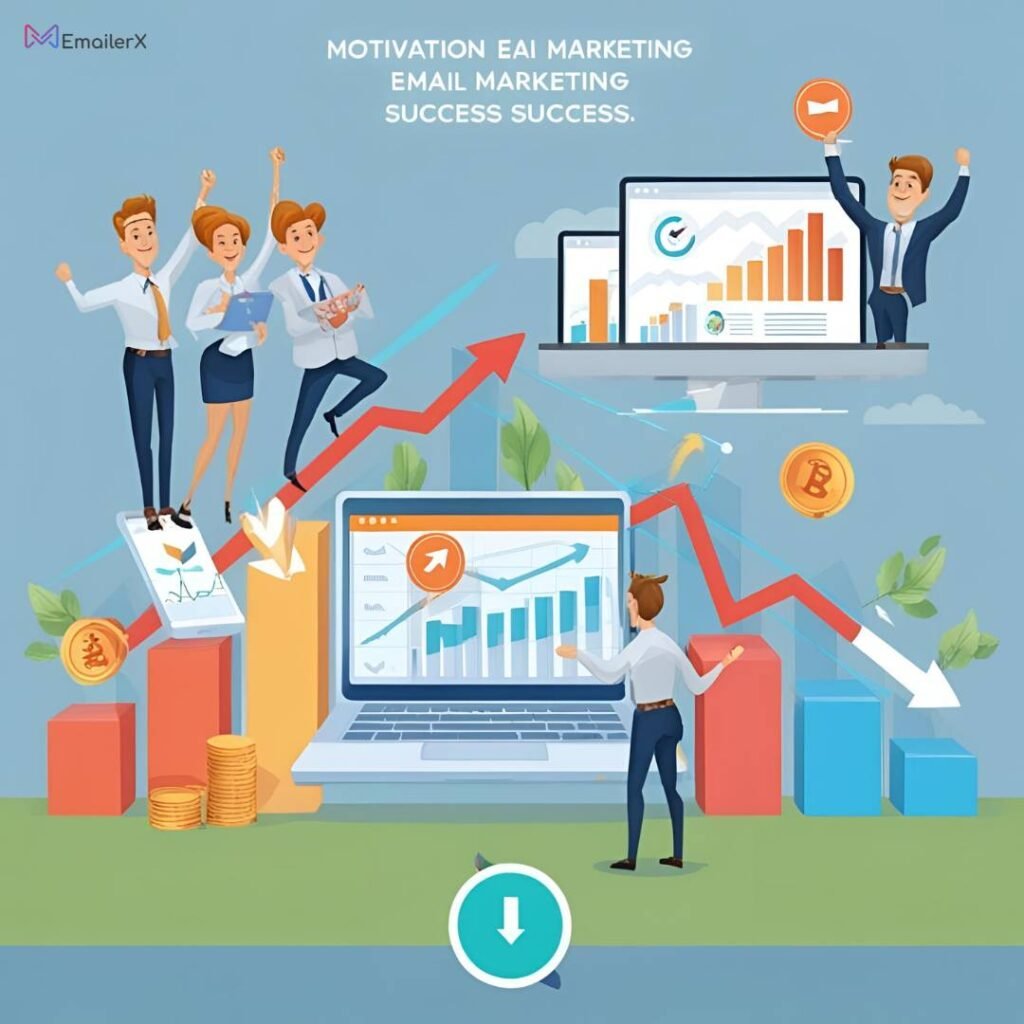
The email marketing landscape offers unprecedented choices for businesses of every size and industry. By taking a volume-first approach to platform selection, you can avoid the common pitfalls of overpaying for unnecessary features or selecting a platform that won’t scale with your growth.
Remember these key principles:
- Match volume to platform tier: Choose a platform designed for your current sending volume with room to grow.
- Prioritize deliverability infrastructure: Even the best-designed emails fail if they don’t reach the inbox.
- Consider total cost of ownership: Look beyond subscription pricing to implementation, integration, and management costs.
- Plan for compliance: Ensure your platform supports current and emerging privacy regulations.
- Evaluate AI capabilities: Look for platforms investing in intelligence that matches your sophistication level.
Next Steps in Your Email Marketing Journey
Ready to elevate your email marketing strategy?
- Determine your volume tier based on current and projected sending needs
- Evaluate 2-3 platforms within your appropriate category
- Request demonstrations focusing on your specific use cases
- Test free trials with real campaign scenarios
- Implement your selected platform using our migration guidance
FAQ: Email Marketing Tool Selection
What is the best email marketing tool for beginners?
For beginners, platforms like MailerLite and Moosend offer the best combination of user-friendly interfaces, affordable pricing, and essential features without overwhelming complexity. Look for drag-and-drop editors, pre-designed templates, and straightforward automation builders to get started quickly.
How much does email marketing software typically cost?
Email marketing platform pricing varies widely based on features and list size:
1. Entry-level plans: $10-30/month for basic features and smaller lists (under 1,000 contacts)
2. Mid-tier plans: $30-150/month for advanced features and medium-sized lists (1,000-10,000 contacts)
3. Enterprise plans: $150-1,000+/month for comprehensive features and large lists (10,000+ contacts)
Many providers also offer free plans with limited features for very small lists, making it accessible to businesses just starting with email marketing.
How do I choose between email marketing platforms?
Select an email marketing platform based on these key factors:
• Your monthly sending volume
• Required automation complexity
• Integration needs with your existing tools
• Budget constraints
• Technical expertise of your team
• Industry-specific requirements
• Deliverability infrastructure
• Compliance and security requirements
The most important step is matching the platform’s capabilities to your specific business needs rather than choosing based solely on popularity or feature lists.
What features should I look for in an email marketing tool?
Essential email marketing features include:
• Intuitive email builder with mobile-responsive templates
• List management and segmentation capabilities
• Basic automation workflows
• Detailed analytics and reporting
• High deliverability infrastructure
• Compliance features (unsubscribe management, GDPR tools)
• A/B testing capabilities
• Integration with your website and CRM
As your needs grow, look for advanced features like predictive analytics, multi-variate testing, and customer journey orchestration.
Can I migrate from one email platform to another?
Yes, you can migrate between email marketing platforms, though the process requires careful planning. Most migrations involve:
• Exporting subscriber data from your current platform
• Cleaning and formatting this data for import
• Recreating templates and automation workflows
• Setting up integrations and tracking
• Testing thoroughly before full transition
Many platforms offer migration assistance or services to help with this process, especially for larger accounts.
How important is email deliverability when choosing a platform?
Deliverability is critically important—even the best-designed email is worthless if it never reaches the inbox. When evaluating platforms, look for:
• Dedicated IP options for high-volume senders
• Authentication support (SPF, DKIM, DMARC)
• Reputation management tools
• Deliverability monitoring and reporting
• Compliance enforcement to maintain good sending practices
Pre-send spam testing tools
Providers with strong deliverability typically invest in sender education, maintain strict anti-spam policies, and offer dedicated deliverability teams.
What is the difference between email marketing and marketing automation?
Email marketing focuses specifically on sending emails to subscribers, while marketing automation encompasses broader functionality:
Email Marketing:
• Creating and sending newsletters and campaigns
• Basic segmentation and scheduling
• Simple automated responses
• Email performance tracking
• Marketing Automation:
• Multi-channel communication (email, SMS, ads, etc.)
• Complex customer journey orchestration
• Behavior-based triggering across touchpoints
• Lead scoring and progressive profiling
• Advanced personalization across channels
Many platforms offer both capabilities, with marketing automation representing more sophisticated functionality beyond basic email campaigns.


